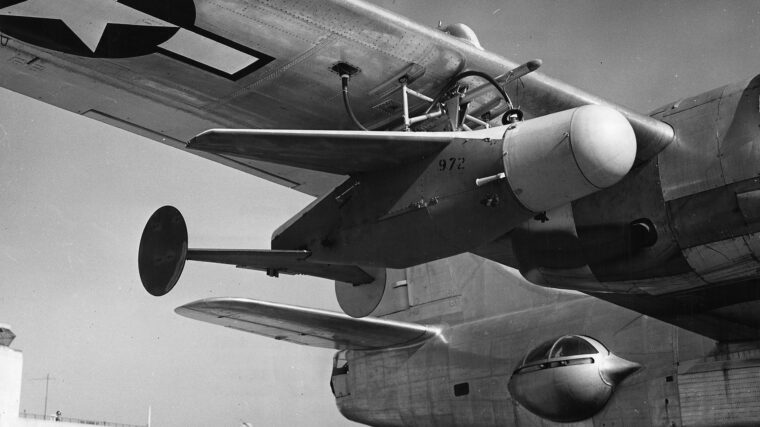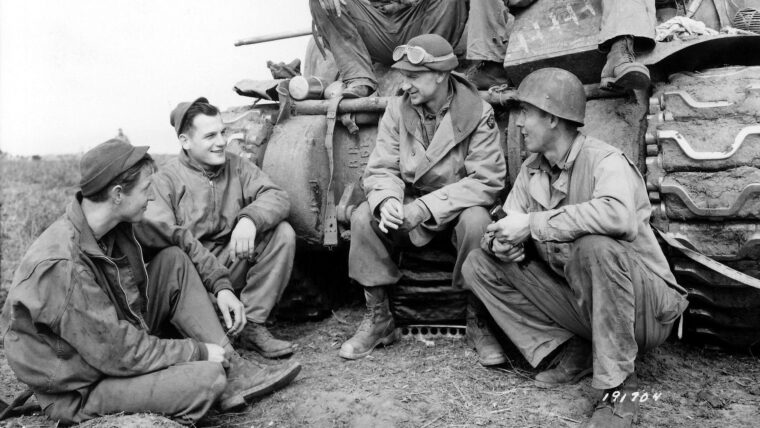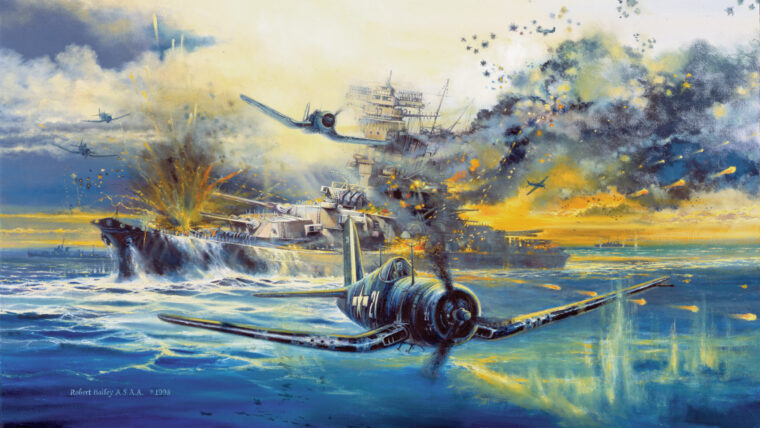
Okinawa
Soviet Invasion of Manchuria: Catching Japan Unawares
By John WalkerAt 11:02 am on August 9, 1945, an American warplane dropped an atomic device nicknamed “Fat Man” onto the city of Nagasaki, Japan. Read more

Okinawa
At 11:02 am on August 9, 1945, an American warplane dropped an atomic device nicknamed “Fat Man” onto the city of Nagasaki, Japan. Read more

Okinawa
Eugene Sledge knew a thing or two about combat fatigue. It was September 15, 1944, on a tiny spit of land called Peleliu: the Japanese opened up with heavy mortar fire just as the Marines moved off the beach and started inland. Read more

Okinawa
While making business calls in Tampa, Florida, during the summer of 1980, I spotted a strange looking tracked contraption atop an overgrown pedestal in front of the U.S. Read more

Okinawa
On May 27, 1945, U.S. Naval Reserve Lieutenant Leo Kennedy was patrolling from his station at Yonton Field in Okinawa. Read more

Okinawa
Colonel H.B. Miller, a Marine public relations officer on Guam during World War II, looked up from his desk to see before him a boyish-looking woman dressed in a baggy khaki shirt and pants and wearing horn-rimmed glasses. Read more

Okinawa
The first torpedo struck the Shinano carrier farthest aft. Over the next 30 seconds three more warheads detonated against the massive aircraft carrier’s hull, working their way forward. Read more

Okinawa
It was Colonel Hiromishi Yahara who designed and implemented the jiykusen, or the yard-by-yard battle of attrition that cost the American forces so many casualties in the three-month battle, and he was the highest ranking officer to survive the battle and make it back to Tokyo. Read more

Okinawa
Ernie Pyle did not want to go to Okinawa. He was too old, too tired, and—some said—too jaded for yet another American invasion of ferocious enemy territory. Read more

Okinawa
Because of the severe conditions at Sugar Loaf and elsewhere on Okinawa, the fighting produced an alarmingly high number of battle fatigue cases. Read more

Okinawa
Lieutenant General Ushijima heavily depended upon two staff officers who, although differing in temperament, formed along with the general as effective a commanding trio as the Marines faced in the Pacific. Read more

Okinawa
One of the most heart-wrenching moments to occur on Okinawa involved a family with a proud Marine heritage. Read more

Okinawa
On September 2, 1945, representatives from the Allied and Japanese governments signed the peace treaty that ended World War II. Read more

Okinawa
The mighty invasion armada for the main thrust at Luzon in the Philippine Islands was being assembled on December 28, 1944. Read more

Okinawa
A series of swift victories took Japanese troops to the gates of India in 1941-1942 when British and Indian units fell back to the Assam hills northwest of Burma. Read more

Okinawa
Peering through his binoculars, Vice Adm. Chuichi Nagumo was in awe of the nearly 800 ships from Vice Adm. Read more

Okinawa
In the late afternoon of April 6, 1945, five days after American GIs and leathernecks scrambled onto an Okinawa beach a scant 500 miles from Japan, two U.S. Read more

Okinawa
The USS Franklin was not a lucky ship. In March 1945, off the Japanese mainland, the Essex-class aircraft carrier was hit by two 550-pound bombs that struck her flight deck and penetrated into the hangar deck. Read more

Okinawa
Prior to American entrance into World War II, the USS Washington battleship’s initial assignment was escorting supply ships between England and Russia in support of the Lend Lease Act. Read more

Okinawa
The Battle of Okinawa raged not only on the island itself but in the skies overhead. Japanese aircraft attacked the invading Americans not only through conventional bombing attacks but also by using the dreaded Kamikaze—suicide pilots who turned their planes into guided missiles to inflict more damage. Read more